PDF chapter test TRY NOW
There are various types of quadrilaterals. They are:
- Square
- Rectangle
- Parallelogram
- Trapezium
- Rhombus
- Kite
A square is a quadrilateral with four equal sides and four right angles.
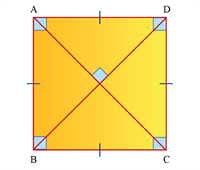
A square has:
- four equal sides AB=BC=CD=DA.
- four right angles ∠A=∠B=∠C=∠D=90°.
- two pairs of parallel sides AB∥DC and AD∥BC.
- two equal diagonals AC=BD.
- diagonals that are perpendicular to each other AC⊥BD.
- diagonals that bisect each other. That is one diagonal divides the other diagonal into exactly two halves.
A rectangle is a quadrilateral with two pairs of equal and parallel opposite sides and four right angles.
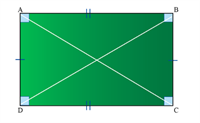
A rectangle has:
- two pairs of parallel sides AB∥DC and AD∥BC.
- four right angles ∠A=∠B=∠C=∠D=90°.
- opposite sides of equal lengths AB=DC and AD=BC
- two equal diagonals AC=BD
- diagonals that bisect each other. That is one diagonal divides the other diagonal into exactly two halves.
A parallelogram is a quadrilateral in which both pairs of opposite sides are parallel.
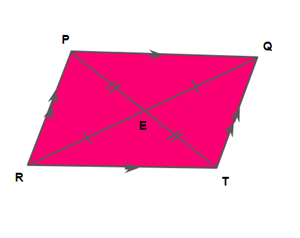
A parallelogram has:
- two pairs of parallel sides PQ∥RT and PR∥QT.
- opposite sides of equal lengths PQ=RT and PR=QT.
- opposite angles that are equal ∠P=∠T and ∠Q=∠R.
- two diagonals that bisect each other. That is one diagonal divides the other diagonal into exactly two halves.
A trapezium is a quadrilateral in which one pair of opposite sides is parallel.
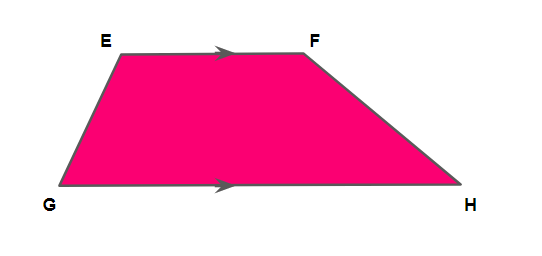
- The sides that are parallel to each other are called bases.
In the above figure, EF and GH are bases.
- The sides that are not parallel to each other are called legs.
In the above figure, EG and FH are legs.
There is nothing special about the sides, angles, or diagonals of a trapezium.
But if the two non-parallel opposite sides are of equal length, then it is called an isosceles trapezium.
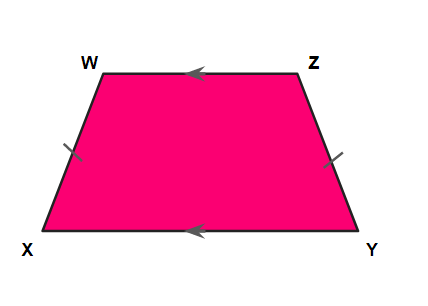
The above quadrilateral XYZW is an isosceles trapezium.
In an isosceles trapezium, the lengths of the diagonals are equal. That is XZ=WY.
A rhombus is a quadrilateral with four equal sides.
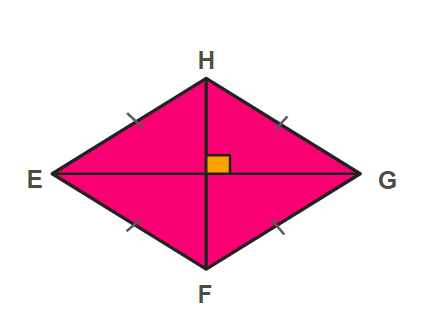
A rhombus has:
- two pairs of parallel sides EH∥FG and EF∥HG.
- four equal sides EH=HG=GF=FE.
- opposite angles are equal ∠E=∠G and ∠H=∠F.
- diagonals that are perpendicular to each other EG⊥HF.
- diagonals that bisect each other. That is one diagonal divides the other diagonal into exactly two halves.
A kite is a quadrilateral in which two pairs of adjacent sides are equal.
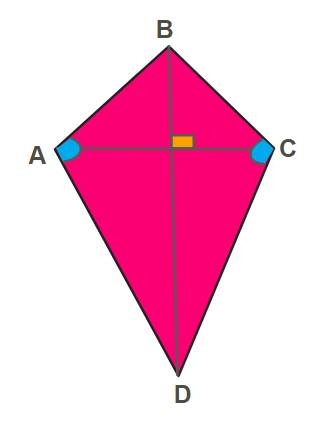
A kite has:
- two pairs of equal adjacent sides AB=BC and CD=DA.
- one pair of opposite angles (which are obtuse) that are equal ∠A=∠C
- diagonals that are perpendicular to each other AC⊥BD
- a longer diagonal that bisects the shorter diagonal.
The following chart allows us to understand the hierarchy of quadrilaterals.

